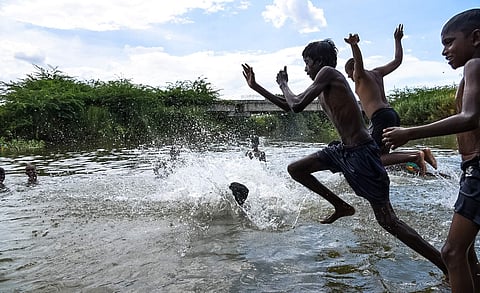

Almost three-fourths of a century after Independence, Mahatma Gandhi’s dream of empowering the youth in villages and small towns to avail economic opportunities there remains unrealised — and Karnataka is a striking example of that.
The recently released draft Karnataka Youth Policy points out that a whopping 21.73 per cent of the state’s 2.1 crore youth in the age group of 15-29 are in Bengaluru. The city with the second-highest concentration of youth population is Belagavi with a poor 7 per cent, followed by Ballari (4.92 per cent), Mysuru (4.77 per cent) and Kalaburagi (4.22 per cent). The district with the lowest youth population with just 0.69 per cent is Kodagu.
This is an indicator that youth from across the state are heading to Bengaluru for jobs and livelihood as villages, towns and two-tier cities across the state have been ignored while developing their respective economies to create opportunities for the youth.
Dr R Balasubramaniam, Chairman, Karnataka Youth Policy Committee, said this is because there were no measures taken to initiate economic drives outside Bengaluru, which in turn led to skilled and talented people moving towards the economic magnet which is Bengaluru. "There is, therefore, a need to redefine our rural policy. The government should create economic micro-clusters which are rural-centric," he said.
Former director of Gandhi Bhavan, University of Mysore, Prof S Shivarajappa, said Mahatma Gandhi dreamed of ‘Grama Swaraj’ (focussing on village economies) and strengthening rural India. "If villages flourish, the entire nation will develop. Youth play a major role in developing villages. Without giving amenities and facilities, including hospitals, schools, providing skill development to make them self-reliant, and extending facilities to encourage them into entrepreneurship in their villages, youth will not remain in the villages. They will migrate to urban areas. Unfortunately, the slogans of Gandhiji's dream remain only on paper. The government does not bother to implement or make attempts to implement his dream and vision,” he said.
Dr Ashwathnarayan CN, Minister of Higher Education, IT/BT/S&T and Skill Development, Entrepreneurship and Livelihood, however, claimed that they are taking all the measures to strengthen the villages economically. He said they have started with the public school concept at panchayat level to lay a strong foundation from primary education itself.
In higher classes, along with the academic curriculum, the students are being given vocational training from a young age and the students can make use of it to lay the foundation for a future career in the villages itself.
"The pandemic has taught us that the work-from-home concept can be a successful model in a few sectors including IT. The concept of coming to the office has been removed from several workplaces. If we provide better connectivity, youths can stay at their places,'' he added.
According to the 2011 census, Karnataka’s population was 6.10 crore, of which 1.7 crore were the youth aged 15-29. Projection by the Self Development Goal Coordination Centre in Karnataka, using these figures, indicates that the current population of state is 7.3 crore including 2.1 crore youth in the same age-group.
TOP FIVE DISTRICTS WITH THE HIGHEST YOUTH POPULATION
Bengaluru Urban: 21.73%
Belagavi: 7%
Bellary: 4.92%
Mysuru: 4.77%
Kalburgi: 4.22 %
BOTTOM FIVE DISTRICTS WITH LEAST YOUTH POPULATION
Kodagu: 0.69%
Chamarajanagar: 1.44%
Chikkamagaluru: 1.45%
Ramanagara: 1.58%
Gadag: 1.61%
